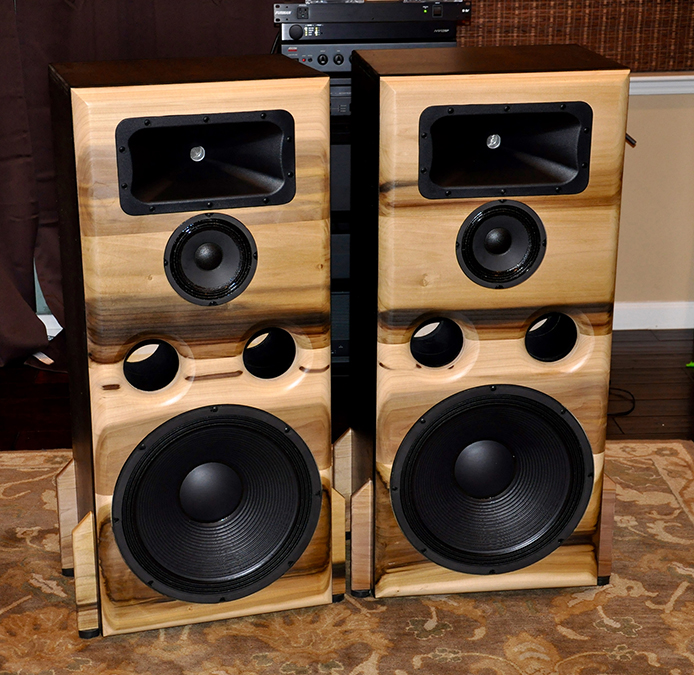
Rally Sport
Designer:
Javad Shadzi
Project Category:
Tower/Floor
Project Description:
Home theater and modern music benefit from efficient and dynamic speakers, there are many small and compact speaker designs that make dynamic compromises for clear sound in a small package. If one is willing to throw proportional correctness out the window, a speaker design like the Dayton Rally Sports will open up a new world where sound is not just heard, but felt and experienced as well!
Smooth linear frequency response defines many of the best speaker designs on the market, but without driver size, displacement and efficiency, sound cannot be reproduced in the most dynamic way. Employing Dayton Pro Audio drivers, the Dayton Rally Sports build on smooth frequency response. With efficiency and the ability to truly deliver transients in music and movies, the Rally Sports engage any listener with dynamic listening that evokes the startling realism available in the recording. Three drivers, all optimized in their usable frequency ranges, excel at delivering transient, accurate and low distortion playback, not only with sparkling detail but at stunning volume levels if desired. Any simple amplifier will easily drive the Dayton Rallys to powerful sound pressure levels, even 15 watts per channel can deliver 100+ decibel sound levels.
Design Goals:
1 – Efficient – with minimal power tremendous volume levels can be achieved, base efficiency for this speaker is about 93db/watt.
2 – Flat and smooth frequency response – The Rally Sports are quite flat from 40Hz to over 15kHz and vary less than 5db in that range. They also have a slight downward tilting response which provides warm sound and sibilant free high frequency response.
3 – Affordable – though not the cheapest speaker to build, the Rally Sports can be built for well under $1000 and can be run off any readily available amplifier with their 8 ohm loads.
4 – Beautiful – for my personal execution, I wanted something that would hold up to any decor or furniture in our home, however these can be built like PA speakers or much simpler painted or veneered MDF cabinets.
Driver Selection:
The following Dayton Audio drivers were used:
Woofer –
PA385S 15″ Pro Woofer – This woofer was chosen for it’s combination of low Fs and efficiency, it can play up to 500hz cleanly if needed and in a reasonable enclosure has good response down to 30hz. Typically true subwoofers with very low Fs around 20hz are very inefficient, on the other end of the spectrum pro woofers with 100db sensitivity can rarely play down below 50hz. The PA385S is a reasonably rare combination perfect for this type of high efficiency, full range home speaker.
Midrange
PA165-8 6″ midrange – This mid was chosen for it’s smooth response up to 2khz, in this application it is being crossed over at that point. It also has good efficiency which matches the woofer’s.
Tweeter
D250T-8 Compression Driver – affordable and high quality compression driver with 1.7” voicecoil and 1” throat. Don’t expect strong response up to 20kHz, however I am about 40 and can only hear to 16k, most music has little content above 10k, this has good usable output past 15kHz and is quite common for compression driver tweeters.
Horn
H6512 1″ Waveguide – any compression driver needs a horn and this waveguide provides consistent dispersion in the horizontal plane, meaning the “sweetspot” effect is diminished and more people can experience high frequency sound with a horn like this. Sound is very uncolored with no honkiness.
Enclosure Design:
Because the Rally Sports are a larger floor standing design, we can splurge somewhat with air volume to allow the woofer to play lower and efficiently with a ported design. After extensive modeling, I chose a 3.8 cubic feet enclosure tuned to 38hz. Lower tuning could be used but output above 40hz will suffer. Since most music features content above 30hz, the 38hz tuning frequency allows strong output to that point with 24db roll off below that point.
That 3.8 does not include the volume of bracing, mid enclosure or of the ports so be sure to include those in the total volume. In my case my mid enclosure used .1 feet, the bracing used .25 and the dual 4” ports .1 as well.
Dual 4” ports end up about 7” long but I always fine tune to the final frequency using Dayton Dats. You can get away with shorter 3” diameter ports but air velocity will be higher and the chance of chuffing as well. On the inside of the port I routered out wooden rings and put ½” roundovers on them, the outside of the ports have a 1.25” radius to allow smooth entry in and out of the port. At full xmax of these woofers (about 11mm) there is absolutely no port sound or chuffing with this design.
Internal dimensions are 38” high, 16” wide and 12” deep but your design may need to be adjusted depending on the port size you use and the amount of bracing you chose.
For the midrange enclosure, I created a reverse horn that I’ll flippantly call an “infinite dampening chamber”, the idea is that sound waves coming off the back of the midrange are concentrated and absorbed inside a smaller, narrower tube so that they cannot reflect back through the cone creating distortion. The back of the enclosure is a 4-sided pyramid that gets narrower as it moves further away from the midrange. It ultimately ends at a 2.75” square opening which transitions into a 3” diameter sealed tube about 4” long. This entire enclosure was stuffed heavily with poly filling.
Enclosure Assembly:
The Rally Sports can be constructed from a variety of materials like Baltic Birch, MDF and other high quality plywoods work well. I use commonly a void free poplar plywood with Maple veneer on each side, it is available from Home Depot and is a full .745” thick. It is very rigid and not as heavy as MDF, the dust is also better to work with, but MDF would result in an even heavier enclosure. The enclosure is braced with 15/32” sheathing plywood. The front baffle and rear back are finally solid poplar heartwood.
I am a strong believer in glue only whenever possible, all joints are glued and clamped with Titebond Premium glue as it cleans up well and dries incredibly strong. I start by cutting and assembling the tops and sides, then the back is glued on and flush trimmed to the sides. From there bracing is built and glued in, and the mid chamber is integrated into the bracing, the front plywood sub-baffle is attached and ultimately the poplar baffles attached and located with dowels and glued as a final step. Front and back edges feature generous 1.25” radius round overs.
I lightly stuff empty pockets inside the enclosure with polyfill being very careful to not black flow to the ports.
Crossover Design:
I chose to use as simple of a crossover that would do the job for the Rally Sports, but being a 3-way its more complicated than the average 2-way. Crossover points are 200Hz and approx 1300Hz. Slopes between the woofer and midrange are 6 db/octave electrically and about 12 acoustically as I was able to incorporate the natural rolloff of each driver in that range. Between the mid and compression driver are 12/db LR slopes with a Zobel on the midrange to smooth out it’s impedance curve. I also added a baffle step on the midrange to bring it’s response down about 1db towards the CD compared to the CD, the midrange runs 1 db hot and the CD is padded down below the midrange to give that downward slope.
The CD is tamed down, I “voiced” this to have very smooth high frequency response on axis in a typical dedicated audio listening room like I have. If you are using these for actual PA use or Home Theater, feel free to bring the CD up 1-2db, you can achieve this by lowering the value of R1 1ohm at a time until it’s where you want it. An adjustable L-pad could be used as well for the tweeter if you want to change this periodically, it would make sense.
I used reasonably priced good quality components, I’ve listed them below, I’m not particularly a believer in using really expensive components, but if you are you could substitute values as you wish. As these stand they have no trouble with 2-300 watts for long periods of time, I usually run two resistors in series or parallel to achieve the final value to increase their power handling.
Tips & Tricks:
1 – Have fun and challenge yourself – remember you won’t learn anything new if you’re not willing to push yourself, make some mistakes and try to do something you’ve never done before.
2 – In order to achieve the clean 2-tone look with no bleed over of the black stain, I aligned the poplar pieces with the plywood sub-baffles using dowels, then I routed the edges and did all sanding with these pieces doweled in place. Once all woodworking was complete, I stained the plywood enclosure ebony black, then glued and clmped the poplar panels in place, then finally did 4 coats of poly over the whole thing. Trying to tape off and stain rarely works well as the stain will bleed under virtually any tape.
3 – I strongly recommend flush mounting the CD and the midrange to avoid any diffraction issues, the midrange is easy to do with a circle jig, the horn is much harder to do, but doable. Google search the phrase “javad seos horn MTM flush mount”, it should be the first hit, here I do a step-by-step on how to flush mount a horn or non-circular driver.
4 – If you want to use these for portable PA use, I recommend building them out of ½” birch plywood and use moderate window bracing to keep them light and portable. If for home use like me, then weight isn’t as much of an issue, the way I built them they weigh about 90lbs each, these enclosures are incredibly rigid, non-resonant and well dampened.
5 – When I cut the poplar for the front baffle, I let the grain cross from one baffle to the next, so these are a matched pair and when put side-by-side, the grain flows from one to another. Sort of a cool touch.
Conclusion:
The Rally Sports are everything I set out to build, loud, efficient audiophile quality speakers that can be built affordably and driven off just about any amplifier. The Dayton drivers shine in their respective frequency ranges, even at full, deafening volume the drivers do not sound strained. Transients are delivered with startling impact and they play all sorts of music well from jazz, to rock and classical music.
I strived to create a high end tweeter response that would never be considered bright or sibilant, the Rally Sports are easy to listen to, even female voices don’t sound like they are coming out of the tweeter, a pet peeve of mine. Though I love a good dome tweeter, a properly used compression driver has a dry accurate sound that is tough to produce.
About the Designer:
Javad Shadzi owns a high performance auto product engineering and manufacturing company, speaker building is a huge creative outlet and current obsession, with over 12 sets of speakers built in 2016 alone, his wife is thrilled to see what new builds 2017 hold!
Project Parts List:

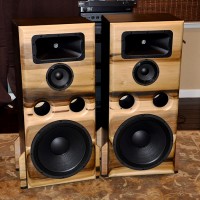
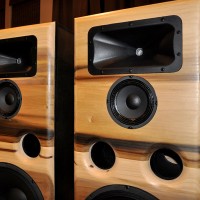
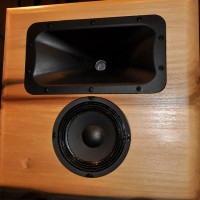
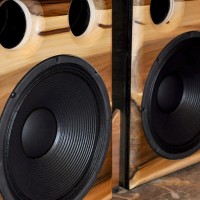
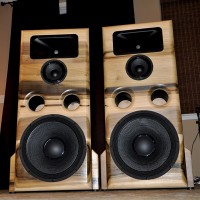
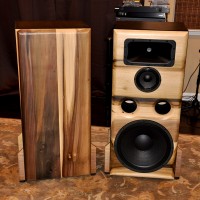


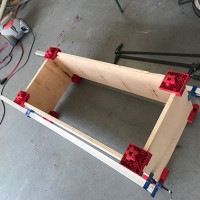
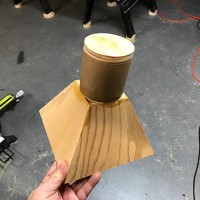

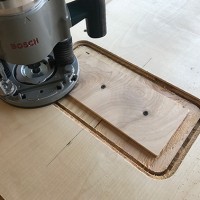
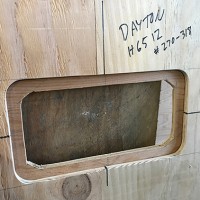

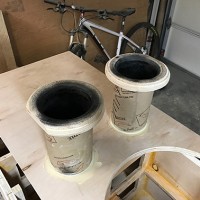
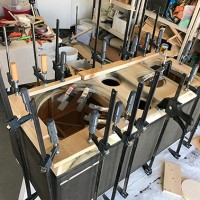
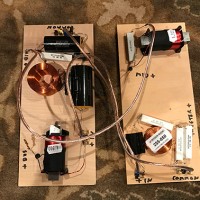
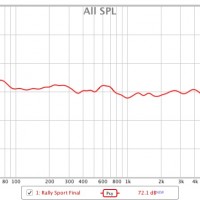

The speakers are extremely gorgeous, and sound amazingly clear and I’m just listening to it on an iPad, I can only imagine what it sounds like life. Incredible build my compliments to the chef. LOL
Just ran a spreadsheet on the cost of building these and came up with under $400/pair — much more doable than the “under $1000 you mentioned. VERRY INTERRRESTING!!!!!!
One problem — the Dayton Audio DT250T-8 comes up as “no longer available.” What do you recommend as a replacement? any changes? I don’t have the equipment, etc, to do any testing so I’m looking for help here.
Did I read somewhere that you are working on a PR version? I would be VERY interested in the design — want to build a pair for my workshop but need it sealed because of dust, etc.
(opened the grill of my old speakers in my garage and some mice had had an acorn orgy in there 😉 )